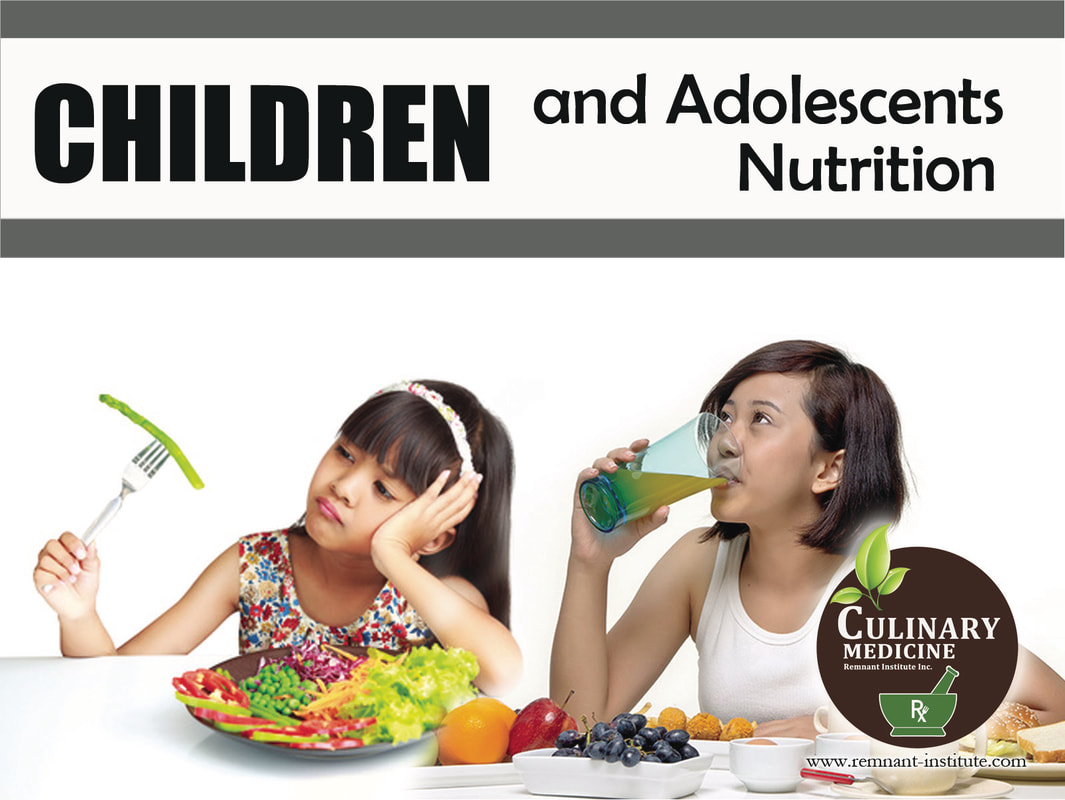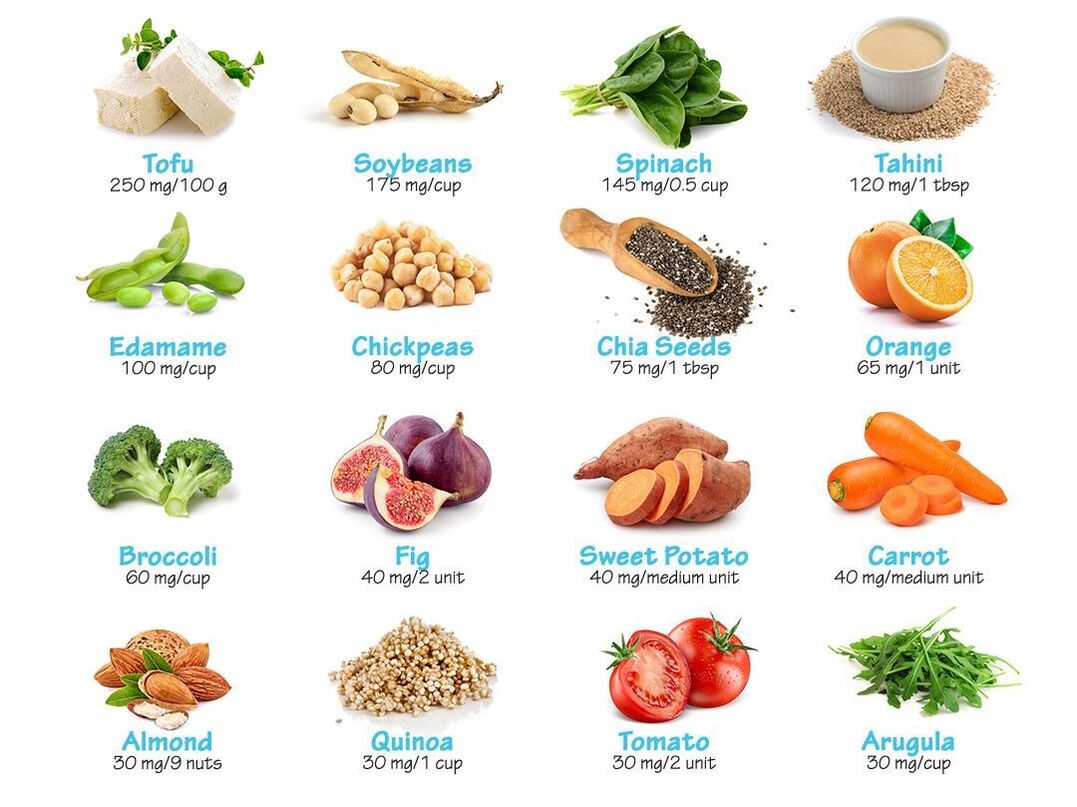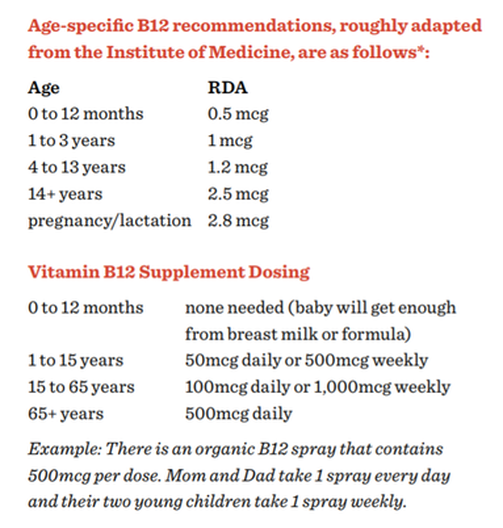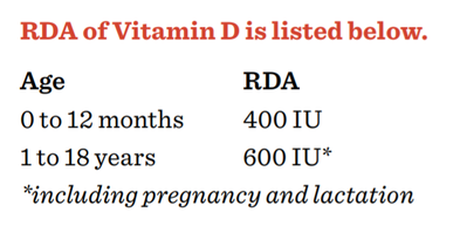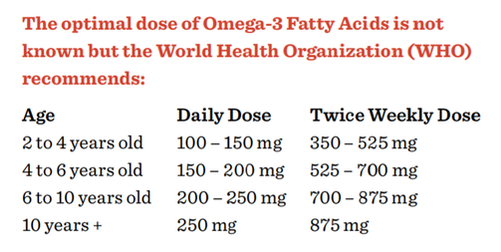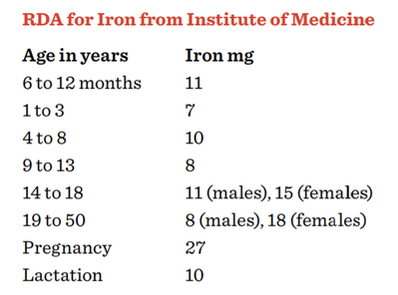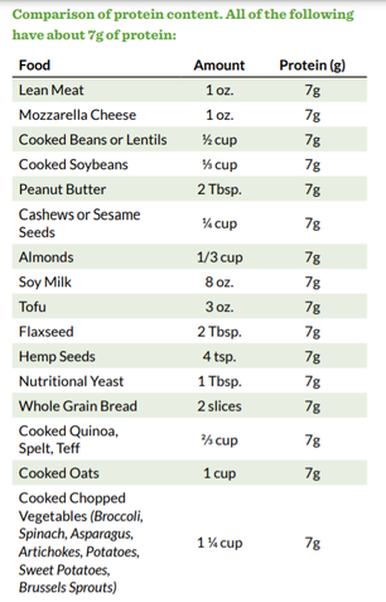UNIT 3 - The Micronutrients |
The Micronutrients
Many parents ask if their child should take a multivitamin. Children are more vulnerable to dietary deficiencies than adults, but more research is needed regarding definitive supplement recommendations. In general, it’s always best to get our nutrients from whole foods rather than supplements. Multivitamins have not been shown to be useful in the prevention of deaths from cancer, heart disease or all-cause mortality in adults. However, if your child is a particularly picky eater or you are working on transitioning to a plant-based diet, a multivitamin may be reasonable. It may be an efficient way to deliver a combination of nutrients during a time of rapid growth and development.
Many vegan multivitamin and mineral supplements are available for kids and can provide them with some of the nutrients we will discuss below, including vitamins B12 and D as well as calcium and zinc. If you prefer vegan supplements, look for the words “vegan” or “vegetable source” on the label. Ingredients such as stearate, lanolin, or gelatin are animal-derived.
Calcium
Plant-based foods are excellent vehicles for delivering calcium to our bodies. Beans and greens are rich in calcium and, unlike dairy, come packaged with countless other vitamins, minerals and phytonutrients that benefit health and improve calcium absorption and utilization. Calcium is a mineral found in the soil, which is why plants (grown in the soil) are excellent sources of calcium. Cows eat calcium-containing plants, which is why their milk contains calcium. Let’s remove the cow (and therefore the cholesterol) and just eat the plants! Breast milk is the best calcium source for at least the first 12 months. After one year, consider adding a fortified organic soy milk. Some other kid-friendly favorites include tofu, almond butter, tahini or navy beans. One cup of tofu alone would meet the daily calcium requirements of a preschooler!
Daily calcium requirements
(Note: these are rough estimates, and many experts think our calcium recommendations are too high!)
Many vegan multivitamin and mineral supplements are available for kids and can provide them with some of the nutrients we will discuss below, including vitamins B12 and D as well as calcium and zinc. If you prefer vegan supplements, look for the words “vegan” or “vegetable source” on the label. Ingredients such as stearate, lanolin, or gelatin are animal-derived.
Calcium
Plant-based foods are excellent vehicles for delivering calcium to our bodies. Beans and greens are rich in calcium and, unlike dairy, come packaged with countless other vitamins, minerals and phytonutrients that benefit health and improve calcium absorption and utilization. Calcium is a mineral found in the soil, which is why plants (grown in the soil) are excellent sources of calcium. Cows eat calcium-containing plants, which is why their milk contains calcium. Let’s remove the cow (and therefore the cholesterol) and just eat the plants! Breast milk is the best calcium source for at least the first 12 months. After one year, consider adding a fortified organic soy milk. Some other kid-friendly favorites include tofu, almond butter, tahini or navy beans. One cup of tofu alone would meet the daily calcium requirements of a preschooler!
Daily calcium requirements
(Note: these are rough estimates, and many experts think our calcium recommendations are too high!)
Age |
Quantity |
0 to 6 months |
200 mg |
7 to 12 months |
260 mg |
1 to 3 years |
700 mg |
4 to 8 years |
1000 mg |
9 to 13 years |
1300 mg |
14 to 18 years |
1300 mg* including pregnancy and lactation |
Let Children Play to grow strong bones
Growing strong and healthy bones More than 90% of our total lifetime bone mass is laid down by the time we are 20 years old! Building strong bones in childhood sets us up for healthy bones for life. Interestingly, studies have not shown a strong link between how much calcium we eat and how strong our bones are. There is certainly no benefit to bone health from consuming dairy products. In fact, populations who drink the most milk have been shown to have the worst bone health. So, how do we get strong, healthy bones?
Growing strong and healthy bones More than 90% of our total lifetime bone mass is laid down by the time we are 20 years old! Building strong bones in childhood sets us up for healthy bones for life. Interestingly, studies have not shown a strong link between how much calcium we eat and how strong our bones are. There is certainly no benefit to bone health from consuming dairy products. In fact, populations who drink the most milk have been shown to have the worst bone health. So, how do we get strong, healthy bones?
- Play! Kids need three hours of physical activity every day, and physical activity is the best way to build strong bones.
- Minimize added salt, which is commonly found in packaged, processed and restaurant foods.
- Eat calcium-rich plant foods, such as beans, greens and soy, every day.
- Sunshine! Adequate vitamin D aids in calcium absorption.
- Avoid excessive protein intake by eating a whole food, plant-based diet. Your body uses calcium to process protein. So as protein intake increases, more calcium is pulled from the body and lost through urine.
- Eat fruits and vegetables. They have an acid-reducing effect on the blood, which also promotes bone health.
Vitamin B12
Anyone on a strictly plant-based diet needs a reliable source of B12. Deficiencies in B12, while rare, can lead to irreversible neurological damage, anemia, developmental regression and feeding difficulties. Infants and young children are especially at risk. B12 does exist in some plant foods, including fortified cereals, plant-based milks and fortified nutritional yeast. However, most experts agree that the most reliable way to ensure adequate B12 intake is to take a supplement. If a nursing mother is appropriately taking a B12 supplement, her baby will get adequate amounts through the breast milk. If there is any doubt regarding the adequacy of the mother’s B12 status, it’s best to supplement the infant.
Anyone on a strictly plant-based diet needs a reliable source of B12. Deficiencies in B12, while rare, can lead to irreversible neurological damage, anemia, developmental regression and feeding difficulties. Infants and young children are especially at risk. B12 does exist in some plant foods, including fortified cereals, plant-based milks and fortified nutritional yeast. However, most experts agree that the most reliable way to ensure adequate B12 intake is to take a supplement. If a nursing mother is appropriately taking a B12 supplement, her baby will get adequate amounts through the breast milk. If there is any doubt regarding the adequacy of the mother’s B12 status, it’s best to supplement the infant.
|
Once a baby stops getting a large portion of calories from breast milk (usually around 9 to 12 months), we recommend starting him on a B12 supplement. Both methylcobalamin and cyanocobalamin are forms of B12 that have been shown to increase blood levels of B12. Either is fine to use. Note that we need very small amounts of B12 each day (0.5-3mcg). However, it’s difficult to find commercially available supplements under 100 mcg. Even doses in the 100–500 mcg range are rare. Fortunately, no adverse effects have been associated with excess B12 intake from food or supplements in healthy individuals. There are many kid-friendly B12 supplement options including sprays, liquids and chewable tablets. Another reasonable option would be to give a daily children’s multivitamin that includes B12.
|
|
Vitamin D
Vitamin D deficiency in children can cause growth delay and rickets. In addition to promoting bone health in both children and adults, there is some research to suggest a protective role of vitamin D in the prevention of certain cancers, cardiovascular disease, diabetes, multiple sclerosis, muscle and joint disease and in reducing inflammation and modulating immune function. Vitamin D is actually not a vitamin at all and is unrelated to diet. It’s a hormone that our body makes from the sun. |
Sunshine is the best way to get vitamin D. It only exists in animal foods (mainly dairy products) because it is artificially added. So everyone, regardless of what they eat, needs to make some effort to get enough vitamin D. Unfortunately, modern lifestyles can make it difficult for anyone, including kids, to get enough vitamin D. We live in a culture where most work and leisure time is spent indoors. Combine that with the regular use of sunscreen and it’s hard for people to get the amount of sun exposure that’s needed for adequate vitamin D synthesis. For most of us, adequate sun exposure would entail about 20 to 30 minutes (or a quarter of the time needed for you to get a sunburn) of midday sun each day with arms exposed and no sunscreen on. People who live farther from the equator, have darker skin or are obese will need longer exposure. If you are unable to get adequate sun exposure, we recommend taking a daily vitamin D supplement. Children less than one year old should minimize direct sun exposure due to their more sensitive skin, and so they should also supplement. Fatty foods like avocados and nuts can help increase vitamin D absorption by about 40%. Vitamin D only stays in our bloodstream for 24 to 48 hours, so we need to make it or take it on a daily basis.
Omega-3 Fatty Acids
Eicospentenoic Acid (EPA) and Docosahexananoic Acid (DHA) are long-chain omega-3 fatty acids that we know are essential to the human diet. Our bodies cannot make them, therefore we must take them in through our food. These fatty acids play an important role in the formation of cell membranes, the transport and oxidation of cholesterol and specialized hormone production. They are also vital for the normal development of the fetal brain and retina. ALA (alpha-linolenic acid) is an essential fatty acid that is converted into DHA and EPA by the body. ALA can be found in vegetarian foods including flaxseeds, flaxseed oil, walnuts, soybeans, chia seeds, hemp seeds and others. With some planning, it’s possible to consume enough ALA on a whole food, plantbased diet to make adequate amounts of EPA and DHA.
Whole plant foods also contain the ideal ratio of omega-3 to omega 6 fatty acids, which may be even more important than the absolute amount of omega-3’s that we eat. It is unclear whether those on a whole food, plant-based diet would benefit from omega-3 supplementation, and expert recommendations differ. If you or your child are not consuming foods high in omega-3s or if you are pregnant or breastfeeding, you may benefit from an omega-3 supplement. Consider a daily supplement with EPA and DHA derived from yeast or algal oil (an oil derived from algae) rather than fish oil in order to avoid the pollutants and toxins that concentrate in fish.
Eicospentenoic Acid (EPA) and Docosahexananoic Acid (DHA) are long-chain omega-3 fatty acids that we know are essential to the human diet. Our bodies cannot make them, therefore we must take them in through our food. These fatty acids play an important role in the formation of cell membranes, the transport and oxidation of cholesterol and specialized hormone production. They are also vital for the normal development of the fetal brain and retina. ALA (alpha-linolenic acid) is an essential fatty acid that is converted into DHA and EPA by the body. ALA can be found in vegetarian foods including flaxseeds, flaxseed oil, walnuts, soybeans, chia seeds, hemp seeds and others. With some planning, it’s possible to consume enough ALA on a whole food, plantbased diet to make adequate amounts of EPA and DHA.
Whole plant foods also contain the ideal ratio of omega-3 to omega 6 fatty acids, which may be even more important than the absolute amount of omega-3’s that we eat. It is unclear whether those on a whole food, plant-based diet would benefit from omega-3 supplementation, and expert recommendations differ. If you or your child are not consuming foods high in omega-3s or if you are pregnant or breastfeeding, you may benefit from an omega-3 supplement. Consider a daily supplement with EPA and DHA derived from yeast or algal oil (an oil derived from algae) rather than fish oil in order to avoid the pollutants and toxins that concentrate in fish.
Iron
Iron is an important mineral that plays a key role in the transport and storage of oxygen. It is vital to normal growth, development and cognitive function. Iron deficiency is the most common nutrient deficiency worldwide, and infants and young children are at particular risk. Iron deficiency can contribute to developmental delays, behavioral problems, fatigue, decreased attention span, learning difficulties, anemia, and in some cases irreversible cognitive abnormalities. Even with recommended universal screening, the prevalence of iron deficiency anemia in toddlers remains at 3 to 7%. Despite common concerns that plant-based diets don’t provide enough iron, vegans and vegetarians have been shown to have similar rates of iron deficiency as omnivores.
Children following a whole food, plant-based diet should take care, just as any child should, to include iron-rich foods in their diet. However, plant-based kids enjoy a huge advantage — a diet free from dairy. Dairy is one of the biggest factors contributing to iron deficiency in three ways: First, it’s very low in iron and often replaces calories from healthier foods. Second, it interferes with the body’s ability to absorb iron from other foods. Third, it can cause microhemorrhage in the gut, leading to iron loss.
Iron is an important mineral that plays a key role in the transport and storage of oxygen. It is vital to normal growth, development and cognitive function. Iron deficiency is the most common nutrient deficiency worldwide, and infants and young children are at particular risk. Iron deficiency can contribute to developmental delays, behavioral problems, fatigue, decreased attention span, learning difficulties, anemia, and in some cases irreversible cognitive abnormalities. Even with recommended universal screening, the prevalence of iron deficiency anemia in toddlers remains at 3 to 7%. Despite common concerns that plant-based diets don’t provide enough iron, vegans and vegetarians have been shown to have similar rates of iron deficiency as omnivores.
Children following a whole food, plant-based diet should take care, just as any child should, to include iron-rich foods in their diet. However, plant-based kids enjoy a huge advantage — a diet free from dairy. Dairy is one of the biggest factors contributing to iron deficiency in three ways: First, it’s very low in iron and often replaces calories from healthier foods. Second, it interferes with the body’s ability to absorb iron from other foods. Third, it can cause microhemorrhage in the gut, leading to iron loss.
Iron requirements in the first two years
Ways to increase iron in your diet
Risk factors for iron deficiency
- 0 to 4 months - Full term infants have built up adequate iron stores during pregnancy. Preterm infants may be deficient and usually need to be supplemented.
- 4 to 6 months - Breast milk no longer supplies adequate iron. Infants should start iron-rich complementary foods. Or, if they’re not ready for food, they should start an iron supplement.
- 6 to 24 months - Iron requirements are high. Ensure that children are eating iron-rich foods daily. Consider supplementing if not.
Ways to increase iron in your diet
- Eat iron-rich foods: leafy green vegetables, beans, seeds, sprouted grains, lentils and fortified foods.
- Pair iron-rich foods with vitamin C-rich foods to enhance absorption (up to 5 times!): citrus, tomatoes, berries, bell pepper, cabbage, cauliflower, broccoli, potato and spinach.
- Soak sprouted grains, beans and seeds before cooking to reduce levels of phytate, a compound in grains that may hinder iron absorption.
Risk factors for iron deficiency
- History of premature birth or low birth weight
- Feeding problems or poor growth in infancy
- Exposure to lead
- Exclusive breastfeeding beyond four months of age without supplemental iron
- Weaning to first foods that do not include iron-rich or fortified foods
- Weaning to cow milk
- Inadequate iron intake
Frequently Asked Questions
Does a whole food, plantbased diet affect the growth, development and puberty of children?
Kids raised on wholesome, plant-based foods grow up to be leaner and healthier adults than their omnivorous friends. They even live longer! There are some notable, beneficial differences in the growth patterns of plantbased kids, particularly regarding puberty. The single biggest predictor of early menarche for girls is consumption of animal protein at a young age. Kids eating a plant-based diet don’t have that exposure to meat and dairy products, and they tend to go through puberty at a later age than their peers. That means they may have slower growth during adolescence with a later growth spurt. However, research shows that kids eating a plant-based diet continue growing for longer and actually attain the same or greater adult height. Later puberty confers many other benefits, including lower risks of many cancers later in life (especially breast and prostate cancer), as well as less heart disease and a longer lifespan. Kids eating plant-based diets have also been shown to have an equal or higher adult IQ. There are a multitude of cognitive benefits for kids consuming a diet filled with unprocessed whole, plant foods. For example, there’s a proven association between artificial food coloring and attention and behavior problems in kids. A diet focusing on unprocessed, plant-based foods completely eliminates this risk!
Children who eat a plant-based diet experience normal growth and development. In addition, their risk of developing chronic diseases such as obesity, heart disease and diabetes is drastically reduced compared to children eating a Standard American Diet (SAD). Children raised on a plant-based diet also experience lower rates of acne, allergies, upper respiratory infections, ear infections and digestive issues. Eliminating dairy from the diets of infants and children suffering from constipation and colic has specifically been shown to be beneficial and, in some cases, completely curative! A plant-based diet also minimizes children’s exposure to environmental toxins and pollutants that can be particularly harmful to their developing brains. Heavy metals, organic pollutants and pesticides have been implicated in diseases such as cancer, asthma, lead poisoning, neurobehavioral disorders, learning and developmental disabilities and birth defects. These dangerous compounds accumulate in greater and greater concentrations as you move up the food chain, so the highest concentrations are found in fish and animal products.
Those same animal foods also carry a higher risk of exposure to bacterial contamination, synthetic growth hormones and antibiotics (which also contribute to the rapidly growing problem of antibiotic resistance). Another benefit of adopting a plant-based lifestyle for your family is the opportunity it brings to teach children valuable life lessons, such as environmental stewardship and compassion toward all living beings. Despite all of these benefits, many parents, concerned family members, and even some healthcare providers often worry that a plant-based diet for children is too complicated or difficult for busy families to manage. The truth is, once you get the hang of it, a plant-based diet is no more difficult, time consuming or expensive than the SAD.
Kids raised on wholesome, plant-based foods grow up to be leaner and healthier adults than their omnivorous friends. They even live longer! There are some notable, beneficial differences in the growth patterns of plantbased kids, particularly regarding puberty. The single biggest predictor of early menarche for girls is consumption of animal protein at a young age. Kids eating a plant-based diet don’t have that exposure to meat and dairy products, and they tend to go through puberty at a later age than their peers. That means they may have slower growth during adolescence with a later growth spurt. However, research shows that kids eating a plant-based diet continue growing for longer and actually attain the same or greater adult height. Later puberty confers many other benefits, including lower risks of many cancers later in life (especially breast and prostate cancer), as well as less heart disease and a longer lifespan. Kids eating plant-based diets have also been shown to have an equal or higher adult IQ. There are a multitude of cognitive benefits for kids consuming a diet filled with unprocessed whole, plant foods. For example, there’s a proven association between artificial food coloring and attention and behavior problems in kids. A diet focusing on unprocessed, plant-based foods completely eliminates this risk!
Children who eat a plant-based diet experience normal growth and development. In addition, their risk of developing chronic diseases such as obesity, heart disease and diabetes is drastically reduced compared to children eating a Standard American Diet (SAD). Children raised on a plant-based diet also experience lower rates of acne, allergies, upper respiratory infections, ear infections and digestive issues. Eliminating dairy from the diets of infants and children suffering from constipation and colic has specifically been shown to be beneficial and, in some cases, completely curative! A plant-based diet also minimizes children’s exposure to environmental toxins and pollutants that can be particularly harmful to their developing brains. Heavy metals, organic pollutants and pesticides have been implicated in diseases such as cancer, asthma, lead poisoning, neurobehavioral disorders, learning and developmental disabilities and birth defects. These dangerous compounds accumulate in greater and greater concentrations as you move up the food chain, so the highest concentrations are found in fish and animal products.
Those same animal foods also carry a higher risk of exposure to bacterial contamination, synthetic growth hormones and antibiotics (which also contribute to the rapidly growing problem of antibiotic resistance). Another benefit of adopting a plant-based lifestyle for your family is the opportunity it brings to teach children valuable life lessons, such as environmental stewardship and compassion toward all living beings. Despite all of these benefits, many parents, concerned family members, and even some healthcare providers often worry that a plant-based diet for children is too complicated or difficult for busy families to manage. The truth is, once you get the hang of it, a plant-based diet is no more difficult, time consuming or expensive than the SAD.
|
What about protein?
This is undoubtedly the first question you will get from concerned family and friends, especially when it comes to plant-based eating during pregnancy or for young children. Rest assured, protein requirements can easily be met by anyone following a plant-based diet, at any stage of life. In fact, studies have shown that the average vegetarian or vegan meets or exceeds the recommended daily protein intake of 0.8 g/kg of body weight for an adult. Protein needs for kids are slightly higher, peaking at about 1.2 g/kg for rapid growth periods during the toddler years and again around puberty. A very active teenage athlete may need up to 1.5 g/kg. During pregnancy and lactation, women only need slightly more protein, about 1.1 g/kg. Be sure to include high-protein plant foods every day. |
Are soy products safe for kids?
Soy is a healthy part of a plant-based diet for adults and kids. The worries about soy are unfounded. Early studies in rats suggested a link between phytoestrogens in soy and cancer, but this did not hold true in humans. In fact, in human studies, soy has been found to be protective toward reproductive health. Soy consumption is linked to later age of menarche, lower rates of breast cancer, earlier menopause and far fewer menopausal symptoms. There is also no evidence that soy causes feminization in boys. The populations who eat the most soy are some of the healthiest in the world! Of note, the health benefits of soy only hold true for unprocessed soybeans or minimally processed soy foods such as tofu, tempeh, miso or soy milk. Try to minimize highly processed soy products, such as soy protein concentrate or texturized vegetable protein frequently found in processed vegan products and meat alternatives.
Soy is a healthy part of a plant-based diet for adults and kids. The worries about soy are unfounded. Early studies in rats suggested a link between phytoestrogens in soy and cancer, but this did not hold true in humans. In fact, in human studies, soy has been found to be protective toward reproductive health. Soy consumption is linked to later age of menarche, lower rates of breast cancer, earlier menopause and far fewer menopausal symptoms. There is also no evidence that soy causes feminization in boys. The populations who eat the most soy are some of the healthiest in the world! Of note, the health benefits of soy only hold true for unprocessed soybeans or minimally processed soy foods such as tofu, tempeh, miso or soy milk. Try to minimize highly processed soy products, such as soy protein concentrate or texturized vegetable protein frequently found in processed vegan products and meat alternatives.
Could a “restrictive” plant-based diet increase the risk for disordered eating or and eating disorder in my teenager?
No. Vegan and vegetarian kids are at no greater risk o f eating disorders than kids following any other type of diet. Families who have been following a plant-based diet for a while will tell you that it does not feel restrictive. At home, offer your kids a wide variety of whole, plant-based foods and focus on the positive aspects of the food. Create a culture at home of enjoyment, freedom, and abundance around food and nutrition. Remove all of the junk foods from your home and you will avoid any arguments over the enticing unhealthy foods. When you’re away from home, don’t stress about the cupcake at the birthday party or even the slice of pizza at the fair. Emphasize the “dos” and not the “don’ts.” The Academy of Nutrition and Dietetics (AND) addressed this concern in their 2016 position paper on vegetarian and vegan diets: “Eating disorders have a complex etiology and prior use of a vegetarian or vegan diet does not appear to increase the risk of an eating disorder, though some with pre-existing disordered eating may choose these diets to aid in their limitation of food intake.” However, the AND also notes that “…some with pre-existing disordered eating may choose these diets to aid in their limitation of food intake.” So, if you notice your child make a dramatic shift in their eating patterns, especially if the changes seem very restrictive or you think they are using healthy eating as a guise to eat less, please talk to their doctor. These can be symptoms of a eating disorder.
No. Vegan and vegetarian kids are at no greater risk o f eating disorders than kids following any other type of diet. Families who have been following a plant-based diet for a while will tell you that it does not feel restrictive. At home, offer your kids a wide variety of whole, plant-based foods and focus on the positive aspects of the food. Create a culture at home of enjoyment, freedom, and abundance around food and nutrition. Remove all of the junk foods from your home and you will avoid any arguments over the enticing unhealthy foods. When you’re away from home, don’t stress about the cupcake at the birthday party or even the slice of pizza at the fair. Emphasize the “dos” and not the “don’ts.” The Academy of Nutrition and Dietetics (AND) addressed this concern in their 2016 position paper on vegetarian and vegan diets: “Eating disorders have a complex etiology and prior use of a vegetarian or vegan diet does not appear to increase the risk of an eating disorder, though some with pre-existing disordered eating may choose these diets to aid in their limitation of food intake.” However, the AND also notes that “…some with pre-existing disordered eating may choose these diets to aid in their limitation of food intake.” So, if you notice your child make a dramatic shift in their eating patterns, especially if the changes seem very restrictive or you think they are using healthy eating as a guise to eat less, please talk to their doctor. These can be symptoms of a eating disorder.
Do kids following a plant-based diet need any special laboratory tests?
No. In general, children following a plant-based diet do not require any additional testing beyond the routine screening tests recommended for all children by the after Academy of Nutrition and Dietetics.. However, it’s best to consult with your healthcare provider to see if your child has risk factors or symptoms that would suggest a nutrient deficiency. Most nutrients, such as vitamin B12, vitamin D and iron, can be evaluated with simple blood tests.
No. In general, children following a plant-based diet do not require any additional testing beyond the routine screening tests recommended for all children by the after Academy of Nutrition and Dietetics.. However, it’s best to consult with your healthcare provider to see if your child has risk factors or symptoms that would suggest a nutrient deficiency. Most nutrients, such as vitamin B12, vitamin D and iron, can be evaluated with simple blood tests.
Article Review
Video Review
|
|
|
Unit Task
- Conduct an interview and assessment with one mother. Evaluate and document the dietary intake of her children using the forms given in the previous tasks. Discuss the topics you learned from this unit focusing on the micronutrients and the frequent concerns of parents on a plant-based diet. Create a written summary of your activity and include your clients' personal reflections (verbatim).
- Submit your Reflective Journal after watching the videos, reading the lesson and article.
